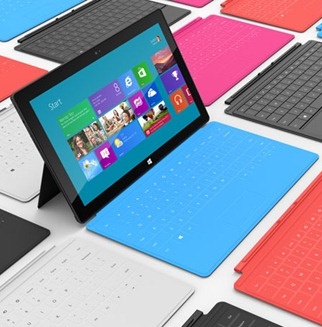Citing its usual upstream industry supply sources, Digitimes reports that Microsoft has canned plans for an aluminum-magnesium design in its upcoming Surface tablet. Instead, according to sources, Microsoft will be adopting a chassis made entirely from magnesium – a move driven by supplier constraints.
Despite the change in material composition, Surface will still bear Microsoft's touted VaporMG technology. This is especially interesting because little is known about VaporMG, but Microsoft has attributed the incredible thinness of Surface to it. If what Digitimes says it is true though, they may have inadvertently revealed that VaporMG is simply a coating rather than a proprietary metal alloy.
Microsoft's change of chassis materials stems from the inability of suppliers to meet the company's demands for manufacturing the Surface shell. Microsoft is hoping to crank out 5 million units before the end of 2012 but after talking to several chassis makers, purportedly none of them could meet such a production volume. According to Digitimes, this has prompted Microsoft to ditch aluminum in its alloy and go full-on magnesium. Unfortunately for Microsoft though, VaporMG appears to present its own high-yield challenges despite the more easily manufactured magnesium design.
Will Surface suffer from supply shortages? It's hard to say, but this could be one possible result.
The change of materials should still produce a sturdy case – a fact supported by other magnesium-clad products like the Toshiba Portege. Meanwhile, VaporMG should still produce that pleasantly smooth, almost soft finish found on demo Surface units.
Additionally, Digitimes points out that the new design may make the tablet slightly heavier than originally planned, but I will point to the fact that magnesium is actually lighter than aluminum. Take that as you will.
